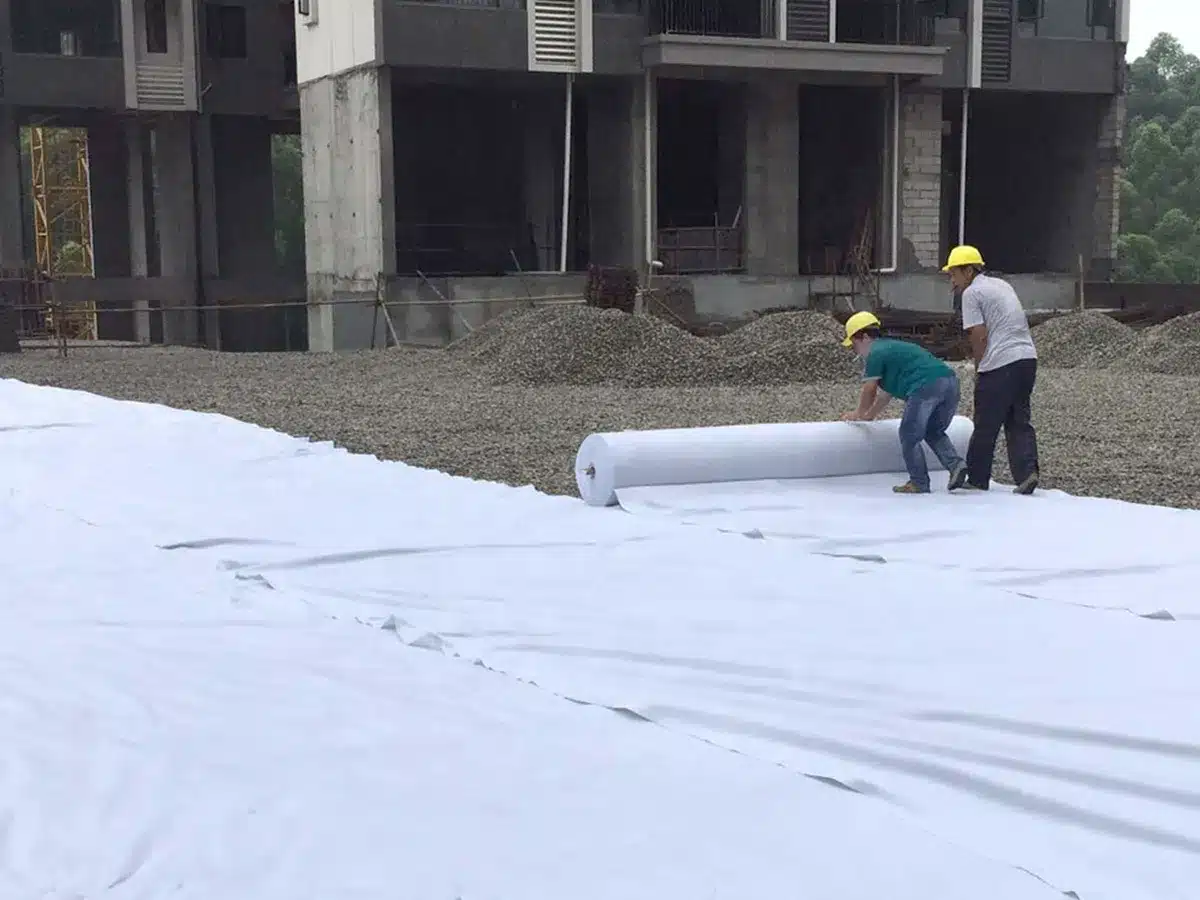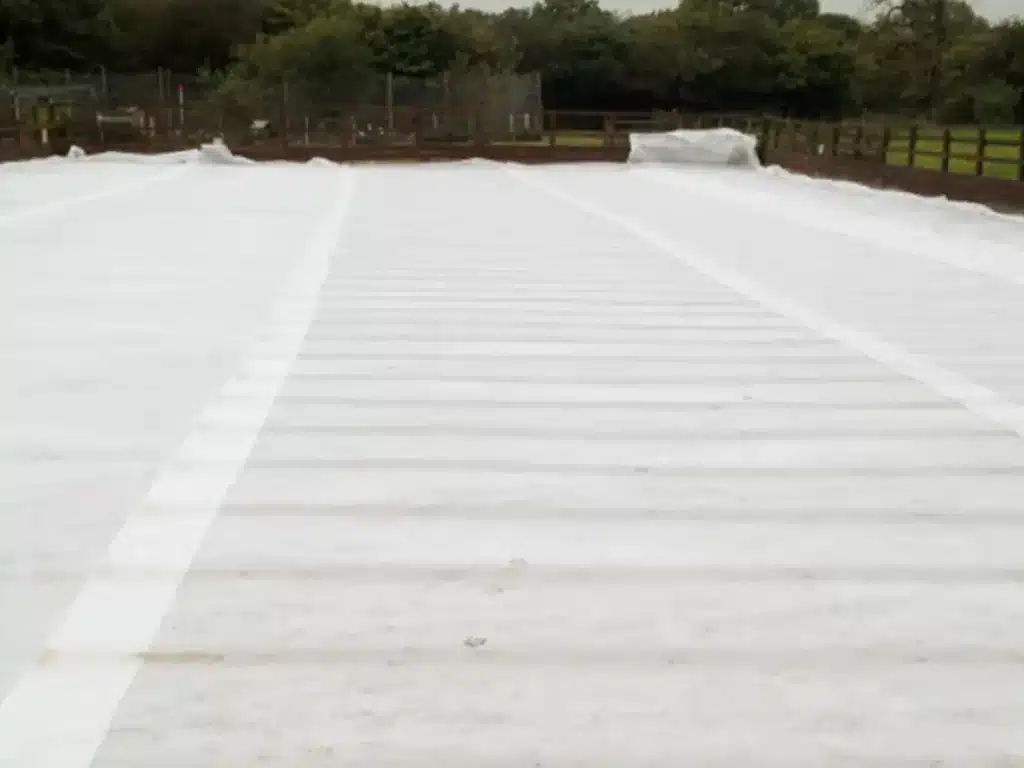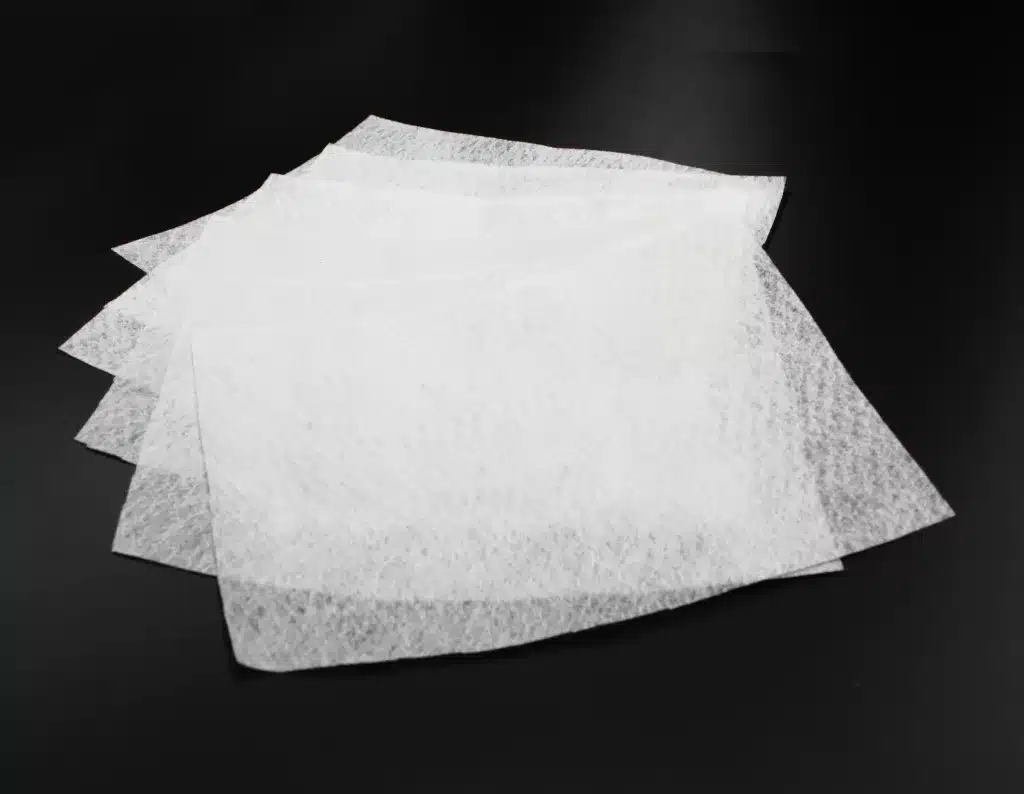+86-159 9860 6917
info@geofantex.com
geofantex@gmail.com
+86-400-8266163-44899
When installing a retaining wall with blocks from Allen Block, geogrid is essential for stabilizing slopes or earth retention. Geogrid is a synthetic, flexible mesh made of plastic that is woven into polyester or high-tensile strength materials, available in uniaxial and biaxial forms. Biaxial geogrid is commonly used for retaining walls under 10 feet, offering strength in multiple directions.
Determining Geogrid Requirements
Geogrids are used in civil engineering primarily to reinforce soil, stabilize structures, and reduce differential settlement. They are made of polymeric materials and work by interlocking with the soil, increasing its load-bearing capacity and overall stability.
Introduction to Geogrids and Their Functions:
Geogrids serve several functions, including:
- Reinforcement: Improving the tensile strength of the soil and preventing lateral deformation.
- Separation: Preventing mixing of different soil layers.
- Drainage: Enhancing water movement while maintaining soil integrity.
Geogrids come in various forms, including uniaxial, biaxial, and triaxial, each designed for specific applications. The choice of geogrid depends on the direction of stress (e.g., uniaxial geogrids are best for tension in one direction).
Geogrid Requirements Summary Table:
Parameter | Recommended Geogrid Type/Specification |
|---|---|
| Soil Type (e.g., cohesive or granular) | Biaxial Geogrid (For cohesive soils) |
| Anticipated Loads/Stress | Uniaxial Geogrid for high-tensile load applications |
| Moisture Content/Drainage Needs | Permeable Geogrid with specific aperture size to allow drainage |
| Environmental Factors | UV-resistant Geogrid for areas with extreme temperature fluctuations |
Calculations and Considerations:
- Tensile Strength: To calculate, use the maximum anticipated load divided by the tensile capacity of the geogrid.
- Design Standards: Adhere to standards like ASTM D6637 for tensile properties of geogrids.
These are general recommendations; more specific guidance can be provided if you share detailed soil test results or site conditions.

How Does Geogrid Work?
Geogrids are synthetic materials used in geotechnical engineering to reinforce soils and similar materials. They are typically made from polymers such as polypropylene or polyester and are arranged in a grid-like pattern, allowing for interaction with the surrounding soil. Geogrids are used to strengthen soil and improve the mechanical properties of soil structures.
Types of Geogrid
- Uniaxial Geogrids: Provide strength primarily in one direction. Often used in retaining walls and slope stabilization
- Biaxial Geogrids: Offer equal strength in two directions (both longitudinal and transverse). Commonly used in road construction and pavements.
- Triaxial Geogrids: Provide strength in multiple directions, offering more uniform reinforcement. Typically used in soft soil conditions for enhanced load-bearing capacity.
Mechanisms of Function
- Soil Stabilization: Geogrids interlock with soil particles, providing structural integrity and preventing soil movement. This increases the load-bearing capacity of the soil and reduces deformation under load.
- Load Distribution: By distributing loads over a wider area, geogrids help prevent localized failure, improving the lifespan of structures like roads and embankments.
- Erosion Control: When used on slopes, geogrids prevent surface erosion by reinforcing the soil, particularly in areas with water runoff.
Practical Applications
Road Construction: Geogrids are placed under the base layer of a road to distribute traffic loads, preventing rutting and deformation, especially on soft soils.
Retaining Walls: Uniaxial geogrids are often used in the construction of mechanically stabilized earth (MSE) retaining walls, increasing the wall’s height and stability without the need for additional materials.
Slope Stabilization: On steep slopes, geogrids reinforce the soil, preventing landslides and surface erosion, especially in conjunction with vegetation or erosion mats.
Conclusion: Benefits of Using Geogrids
- Increased soil stability and load-bearing capacity.
- Reduced need for excavation or replacement of weak soils.
- Improved longevity of civil engineering structures.
- Enhanced erosion control and slope reinforcement in challenging environments.
Installation for AB Aztec or AB Europa Walls
- Foundation: After completing the foundation, start installing the first layer of Reinforcement Grid.
- Geogrid Placement: Place the edge of the geogrid against the back of the raised front edge and roll it out along the wall. For AB Fieldstone, place the edge in the middle of the facing unit.
- Block Placement: Place the blocks to counterbalance the seams by at least 1/4 of their length. Adjust the blocks for alignment to form a straight line.
- Tension and Stake: Pull the back of the geogrid to remove slack and stake it in place. Avoid compacting or driving on the geogrid to prevent damage.
Compacting and Backfilling
- Wall Rock Installation: Fill block cores with wall rock and place wall rock 12 inches (300mm) behind the block.
- Backfilling: Use approved on-site soils or infill behind the wall rock up to the block height. Compact using a plate compactor in lifts of 8 inches (200mm) or less, making at least 2 passes to ensure solid, movement-free soil.
- Surface Preparation: Remove excess material from block surfaces and ensure they are clean and smooth for the next steps.
Repeat these steps to build the wall to the desired height. Use organic soil or approved on-site soil behind the blocks to prevent water run-off and support plantings above the retaining wall.
Installation for AB Fieldstone Walls
- Geogrid Placement: Refer to the approved plans for geogrid placement. Cut geogrid sections to the specified lengths.
- Roll Out Geogrid: After installing the foundation blocks, roll out the geogrid starting in the center of the AB Fieldstone facing, extending back to the excavated area.
- Block Stacking: Stack the next set of blocks (facing/anchoring unit) so the blocks offset from the foundation blocks. Ensure vertical seams are offset by at least 3 inches (75mm) or ¼ the block length.
- Tension and Stake: Pull the geogrid to remove slack and stake in place before installing wall rock and approved infill soil. Avoid running compaction equipment on the geogrid.
Creating Patterned Walls
To create a unique look, blend different block sizes for a hand-laid stone appearance. Use pre-set patterns or design your own. For walls requiring reinforcement or curves, use a two-procedure pattern.
Crafting a Patterned Retaining Wall
Creating a hand-laid wall look requires craftsmanship and attention to detail, including custom fitting of blocks. Allow extra time for first-time construction.
- Block Selection: Use AB Europa or AB Collection for a pre-set or irregular pattern. Refer to the Pattern Chart for details.
- Height and Leveling: A single procedure of a full-sized block should be around 8 inches (200mm) high. Ensure a level surface for an irregular pattern to install geogrid properly.
- Two-Procedure Pattern: Use this pattern for curved walls or those requiring geogrid for proper placement.
By following these guidelines, you can effectively use Geogrid to reinforce your retaining wall, ensuring stability and durability.



Get Free Sample
We’ll respond as soon as possible(within 12 hours)






















